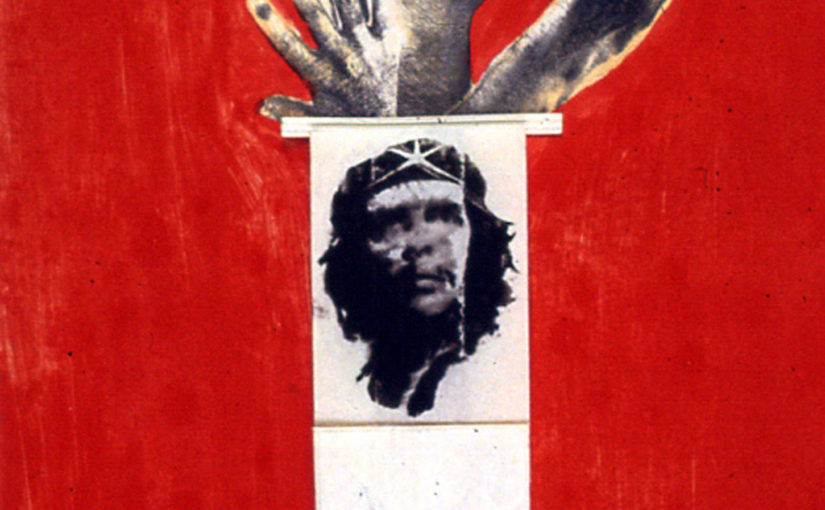
Kimble Bromley, NDSU visual arts faculty, traveled to Cuba in the 1990s when the Castro regime was still in power, eliciting works like “El Che and the CIA.”
When the Soviet Union collapsed 25 years ago, it left a story of influence and political strength in its wake.
To celebrate the anniversary of this monumental moment in modern history, the Memorial Union Gallery’s current exhibitions, “Memorabilia” and “Cuba: Works by Kimble Bromley,” examines the communist and socialist regimes through the lens of artifacts from the time period and paintings of 1990s Cuba.
In Gallery A, NDSU faculty members donated their own artifacts from the Soviet Union and other communist or socialist ideologies to create a unique collection of propaganda, artifacts and other items from the time.
“There are not only descriptions but also personal stories of artifacts, which I think brings the artifacts to life and makes them real,” MU Gallery Coordinator and Curator of Collections Anthony Faris said.
Faculty members who contributed include Chris Whitsel (sociology), John Cox (history, philosophy and religious studies), Florin Salajan (education), Thomas Ambrosio (political science), Tracy Barrett (history, philosophy and religious studies) and Sean Roberts (Germans from Russia Heritage Collection). There are also pieces from the Museum of Russian Art in Minneapolis, Minnesota.
The second gallery, Gallery B, hosts visual arts faculty Kimble Bromley’s works from his trip to Cuba in the 1990s. At the time, Cuba was under the rule of communist leader Fidel Castro.
“When (Bromley) came back, he created bodies of work of the identity of Cuba as experienced by him,” Faris said. “We have the impression that Cuba is rum, old cars and Cuban cigars. But there’s more to the people and culture. Same with the socialist aesthetic.”
The exhibition started as a discussion with Dr. Chris Whitsel, an assistant professor of sociology at NDSU, about artifacts and their role as aesthetic objects.
At the time, Faris was speaking to Kimble Bromley about his interpretation of spaces.
“The two exhibitions are both linked by socialist ideologies,” Faris said. “They represent faculty experience and interpretation of events of communist and socialist republics.”
“It’s an opportunity for faculty to share, with artifacts, their travels and experience. Kimble Bromley, who brought back sketches, created an artifact from his time,” he said.
“Memorabilia” and “Cuba: Works by Kimble Bromley” will be on display in the Memorial Union Gallery until March 2.
